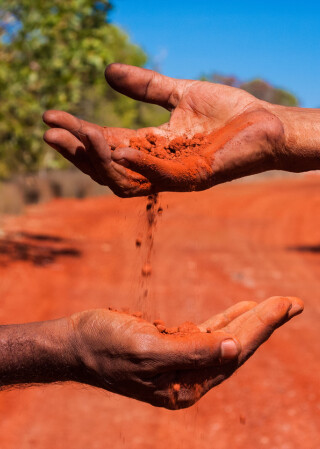Mehmet v Carter [2017]: Aboriginal objects and ‘defects in title’
Finding an aboriginal artefact on your land has significant consequences for a landowner, particularly if you are looking to develop or build on the land. Aboriginal objects are the property of the Crown, not of the landowner of the property on which they are found. Furthermore, the National Parks and Wildlife Act 1975 (NSW) imposes offences on individuals who ‘harm’ (which is defined to include moving) these objects.
As such, finding out that property you are proposing to purchase contains an aboriginal artefact would seemingly, give purchasers certain rights against the vendor. The presence of aboriginal objects on land has a substantial effect on any future development that the purchaser may want to carry out on their land, including significant additional costs and delays (that is, if they are given the permission to carry out development at all).
Notwithstanding this, the general position at law is that a purchaser will only have the right to rescind a contract for the sale of land for a ‘defect in title,’ on the basis that the vendor would not be able to transfer a clean title of the land to the purchaser on completion. It would not be unreasonable to assume that discovering an aboriginal object on land that a purchaser is acquiring would constitute a ‘defect in title.’
However, the NSW Supreme Court in Mehmet v Carter (2017) NSWSC 1067 has made a different finding. The facts of the case are fairly simple. Mehmet, as purchaser, entered into a contract to purchase land in Byron Bay. Mehmet had plans to develop the land. After contracts were exchanged, the vendor and purchaser discovered the presence of an aboriginal remains on the land. The presence of these artefacts could have been ascertained by a search on the Office of Environment and Heritage website. Notwithstanding this, the vendor did not disclose the presence of the remains and the purchaser’s solicitor did not conduct this search. It was only after exchange that the purchaser became aware of their existence.
Ultimately, the purchaser refused to settle without evidence that the ‘defect in title’, being the aboriginal object, was removed from the property. The vendor refused to do so on the basis that the presence of the objects did not constitute a ‘defect in title.’ Both parties later purported to terminate the contract.
Controversially, the Court made the finding that the presence of aboriginal objects on the land did not amount to a ‘defects in title.’ As ownership of the objects was never vested in the vendor, the court found that it could never be said that they were intended to be transferred to the purchaser. As such, the vendor was able to transfer clean title of the land to the purchaser as the aboriginal objects did not form part of the subject matter of the sale. The purchaser’s termination was subsequently found to be invalid, and the deposit was forfeited to the vendor.
While purchasers may assume that the chances of finding an aboriginal object on their land are slim, the recent discovery of aboriginal objects in Retford Park, Bowral indicates that purchasers, and in particular their solicitors, need to be more diligent in making pre-contractual enquiries regarding the state of the land. The precedent set by Mehmet v Carter leaves a purchaser with no avenue against a vendor if they do find aboriginal objects on their land post-exchange.
For more information on the above, please contact Peter Crittenden or Ben Wong on (02) 4626 5077.
The contents of this publication are for reference purposes only. This publication does not constitute legal advice and should not be relied upon as legal advice. Specific legal advice should always be sought separately before taking any action based on this publication.


